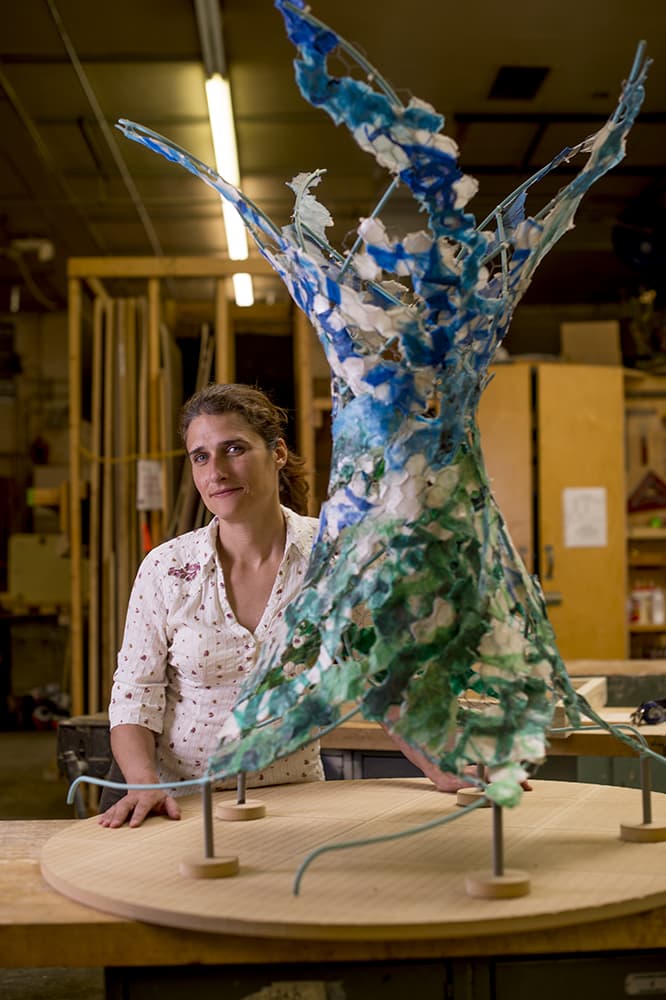
Originally published on April 24, 2015 at the Georgia State University News Hub. Archived here.
By Jeremy Craig
In 2013, Dena Peake went snorkeling while visiting a friend in Indonesia.
The environmental scientist, who’s now studying art at Georgia State, found herself snorkeling under what she called “a blanket of trash.”
“I was very startled,” she said.
Because of her background in science, she understood that sea life was affected by the plastic floating above it.
“I realized that people, in general, don’t have a good understanding of how trash travels. Our trash ends up in the ocean,” she said. “The more I thought about it, the more I realized there certainly is a scientific angle to this I can connect easily with my art work.”
That was the genesis of “Current Collections,” a four-story sculpture made of recycled plastic that once polluted waterways and oceans. Peake created the piece of public art to call attention to the problem of plastic pollution.
The work, part of a collaboration with master of fine arts alumna Amandine Drouet and Assistant Professor of Sculpture Mike Wsol, both from Georgia State, is coming to Atlanta for public exhibition April 22 to June 22 at Centennial Olympic Park after having been exhibited in St. Petersburg, Fla.
Art and public engagement might seem worlds away from Peake’s former career. Before entering the bachelor of fine arts program at Georgia State, she was helping develop biofuel from the wastewater produced by manufacturing paper.
But coming back to art was, in a way, coming back to a family tradition.
“I have one side of my family that’s all artists,” Peake said with a laugh. “An aunt took me under her wing and said, ‘I know you have an artist in you somewhere.’
I think it was probably just under the surface and not something that I explored. I really enjoyed science, so I stayed focused on that for part of my life.”
Her piece is part of a campaign to engage the public, supported by funding from the National Oceanic and Atmospheric Administration and other organizations. The sculpture was entered into the Georgia State Undergraduate Research Conference.
Interested people assembled small plastic components from recycled plastic garbage. These were then put on the tall superstructure of the statue resembling a vortex, which is an underwater current pattern where trash can accumulate in rivers, streams, lakes and oceans.
Getting the public involved in art meant more than giving people something to do on a weekend. It meant giving people something to think about and take part in.
“When you think about community engagement and interactive art, we found that people feel empowered,” Peake said, “empowered to say, ‘This is something I can help prevent.’”
Archived at jeremyscraig.com on 12/6/2020.